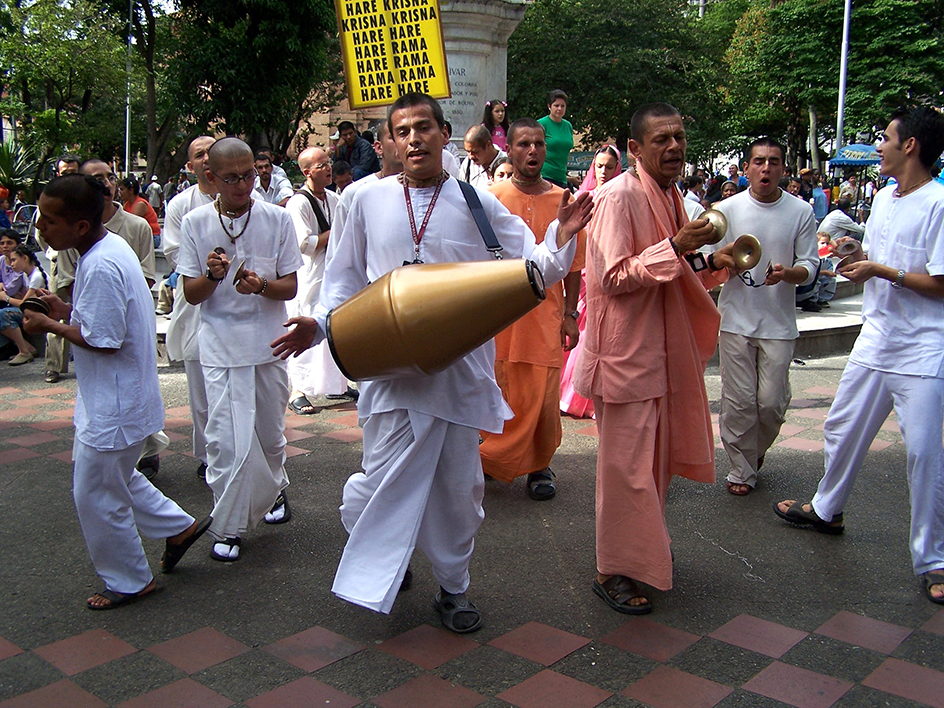Hare Krishna movement, officially known as the International Society for Krishna Consciousness (ISKCON), is a religion whose followers worship God in the form of the popular Hindu deity Krishna. The movement is monotheistic—that is, it is based on a single God. It has roots in devotion to Krishna, which has been practiced on the Indian subcontinent for well over 2,000 years.

An important practice of the movement is chanting (singing) the holy names of God in public spaces. The Indian saint Chaitanya Mahaprabhu started this practice more than 500 years ago. Chaitanya’s followers believed him to be a human form of Krishna descended to Earth. The Hindu monk A. C. Bhaktivedanta Swami Prabhupada brought the practice of public chanting from India to the West in 1965. Prabhupada traveled to New York City, where he initially attracted a small but devoted following. In 1966, he established ISKCON. Prabhupada published translations and studies of dozens of ancient Indian scriptures about Krishna, which his disciples translated into every major language. By the time of his death, he had also established hundreds of Krishna temples, centers, and communities worldwide.
The scriptures of the Hare Krishna movement describe the path of devotion to Krishna. Members of the movement believe that Krishna descended to Earth and lived among people about 5,000 years ago in order to teach them religious principles. They strive to live pure and simple lives completely dedicated to serving and worshiping God. They take vows of vegetarianism and refrain from sexual relations and all forms of intoxication. They also believe that chanting the names of God is the best way to make personal contact with God. Their principal mantra (sacred sound) is “Hare Krishna, Hare Krishna, Krishna Krishna, Hare Hare, Hare Rama, Hare Rama, Rama Rama, Hare Hare.”
